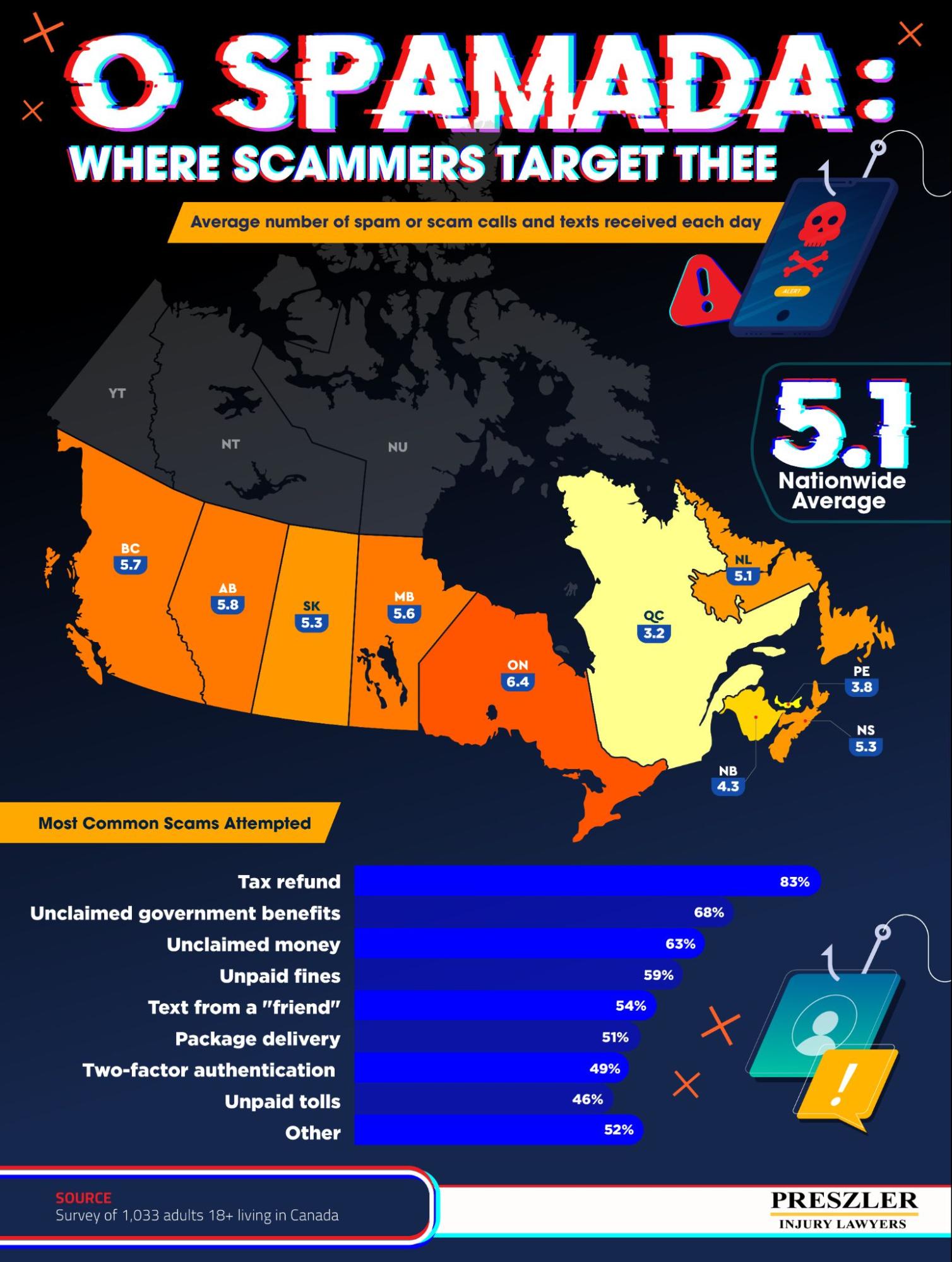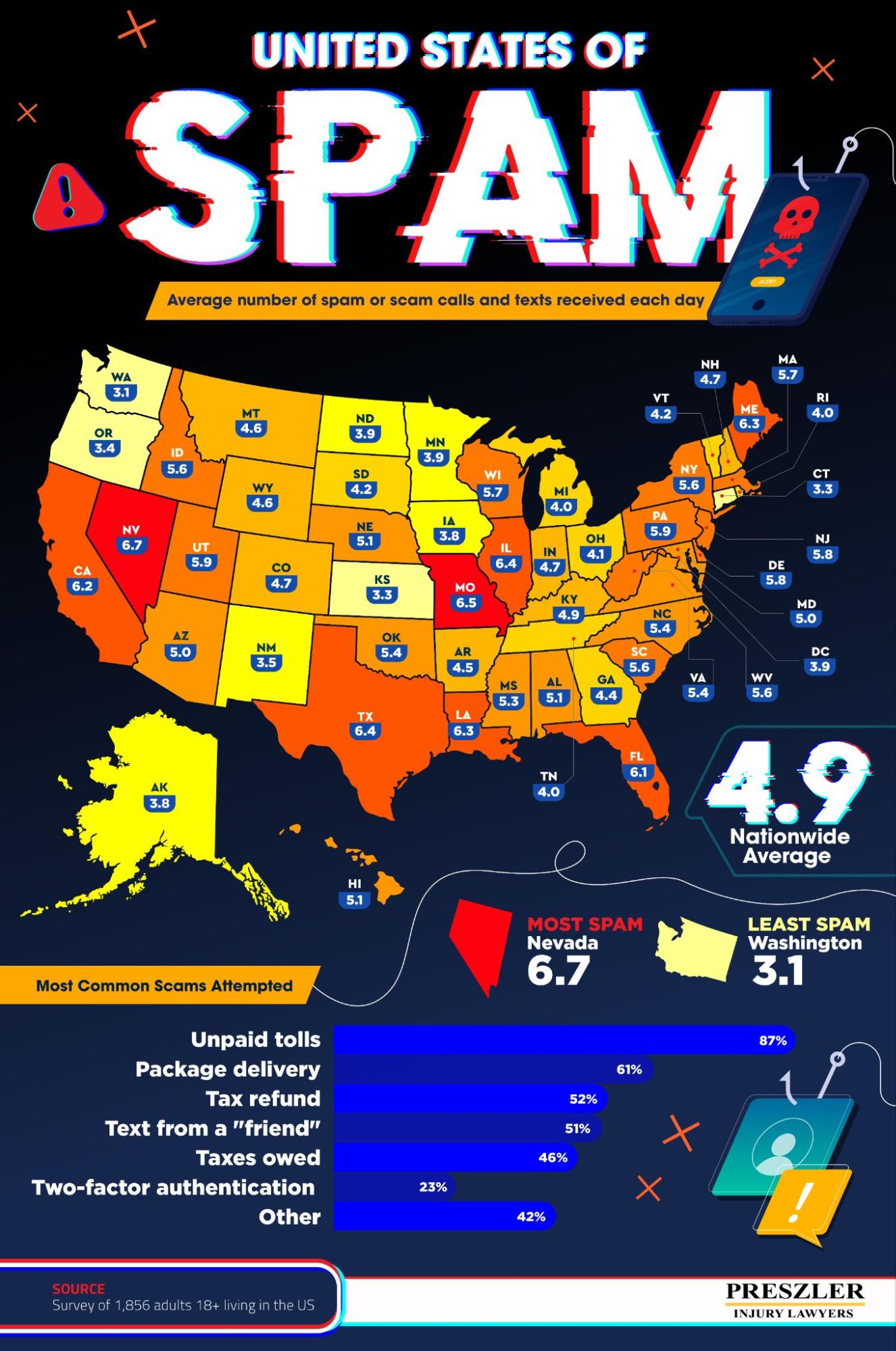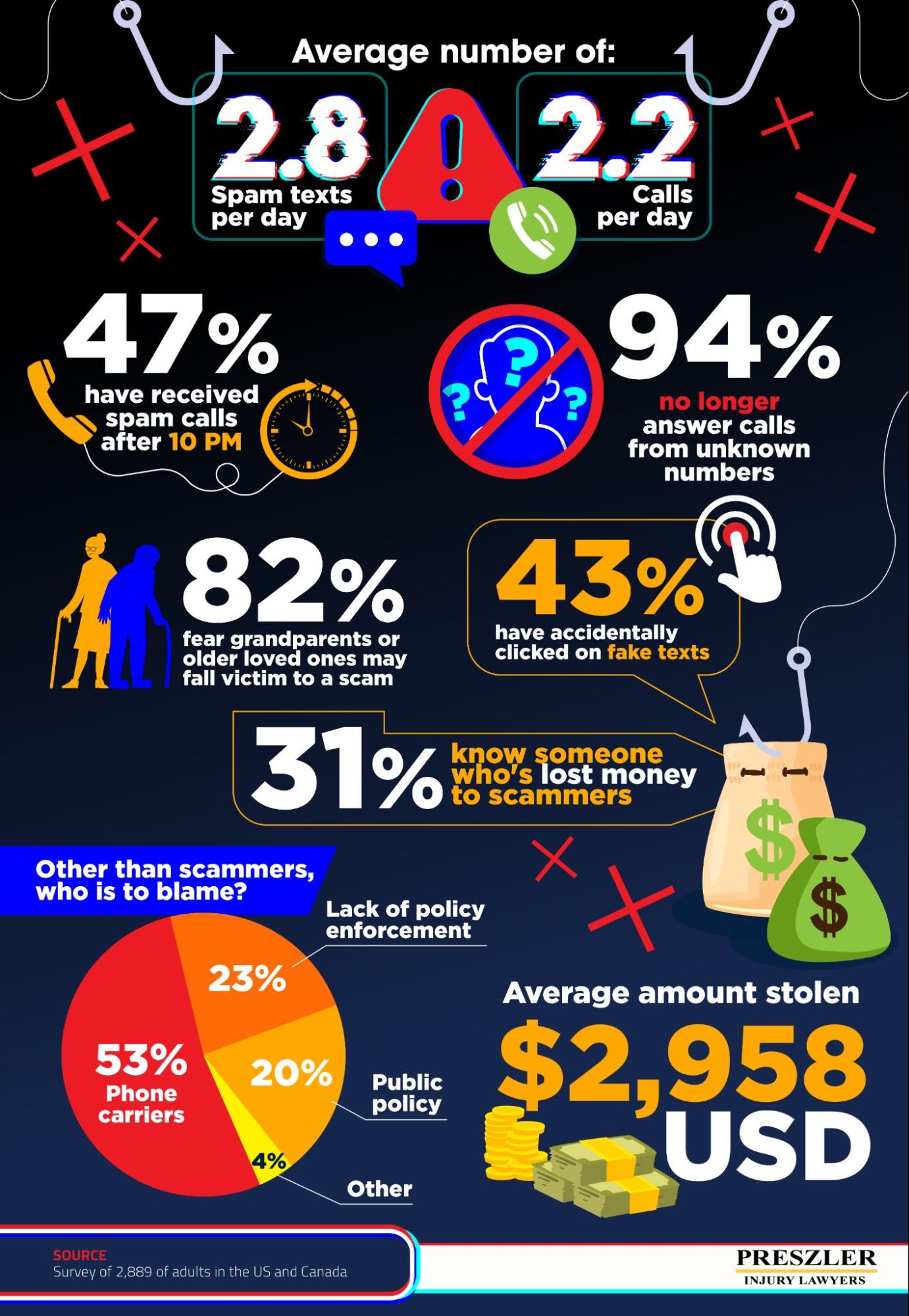Why 94% of Us Have Stopped Answering Our Phones
Despite recent news, there’s one issue uniting Canadians and Americans across the 49th parallel: our collective hatred of spam calls and texts. From Vancouver to Miami, Montreal to Los Angeles, our phones buzz relentlessly with scammers trying every trick in the book. Maybe it’s a stern “Service Canada” agent threatening arrest, or a cheerful “Bill” from Calcutta (Ohio) calling about our expiring car warranty, we’re each suffering an onslaught of unwanted calls and texts daily.
The legal implications are significant. As losses mount and vulnerable populations face increasing risk, questions of carrier liability and consumer protection become more pressing. With average losses of $2,958 per victim and inadequate enforcement of existing regulations, legal action may be the only way forward for businesses and individuals alike.
The problem has gotten so bad that 94% of us have simply stopped answering unknown calls altogether, turning $1,000+ iPhones into glorified answering machines.
Call 1-833-405-8282 to speak with our Eastern Canada legal team
Call 1-833-405-8282 to speak with our Eastern Canada legal team
Key Findings
- Ontario leads Canada with 6.4 spam contacts daily
- Nevada tops US states with 6.7 unwanted calls and texts per day
- 31% know someone who has lost money to scammers, with losses averaging $2,958
- Tax-related scams dominate in Canada (83%), while unpaid toll schemes lead in the US (87%)
- The average person receives 2.8 spam texts and 2.2 spam calls daily
Mapping Canada’s Spam Problem

As if Canada wasn’t catching enough strays these days, the relentless barrage of spam calls and texts seems never-ending. Ontario leads all provinces with 6.4 daily spam contacts (calls and texts combined), followed by Alberta (5.8) and British Columbia (5.7). Quebec residents enjoy the most telecom tranquility, averaging “only” 3.2 unwanted communications per day. Across the country, citizens receive an average of 5.1 total spam or scam calls and texts each day.
Fraudsters targeting Canada have developed their own unique playbook, with tax-related scams leading the charge. A shocking 83% of respondents report encountering tax refund scams, while 68% have been targeted by fake unclaimed government benefit schemes. The trust Canadians have typically put in their public institutions is now being exploited by fraudsters.
Other common scam tactics include threats of unpaid fines and tolls, texts from a long-lost friend who’s fallen on hard times, and the delivery of packages you never ordered.
Windsor tops Canadian cities with 6.8 daily spam contacts, followed closely by Edmonton (6.5) and Toronto (6.3). Ontario dominates the list with four cities in the top ten – Windsor, Toronto, Mississauga (6.2), and Brampton (5.4) – reinforcing the province’s position as Canada’s most targeted region.
Western Canada shows a consistent pattern, with Edmonton (6.5), Vancouver (5.9), Surrey (5.7), and Calgary (5.5) all reporting above-average spam levels. The concentration of technology companies and financial services in these cities may make them attractive targets for scammers.
Halifax’s presence in the top ten (5.6) stands out as the only Atlantic Canadian city on the list
The American Spam Epidemic

In the US, the phone scam epidemic hits a bit softer, with the average American receiving 4.9 illicit communications daily. The most targeted states include Nevada (6.7 calls/texts per day), Missouri (6.5), and Illinois (6.4). The West Coast isn’t far behind, with California logging 6.2 daily attempts. Meanwhile, states like Washington (3.1), Kansas (3.3), and Connecticut (3.3) enjoy relatively bliss.
Sacramento tops all cities across the US and Canada with 7.0 unwanted contacts daily, far exceeding California’s state average of 6.2. Las Vegas follows at 6.9 daily instructions, aligning with Nevada’s rank as the most spammed state. Texas shows concentrated targeting, with Houston (6.6), Dallas (6.4), and Fort Worth (6.1) all making the top ten.
Cleveland (6.8) and Pittsburgh (6.1) each face significantly more spam than their respective state averages of 4.1 and 3.4, suggesting urban areas in these states face disproportionate targeting.
The Human Cost of Digital Deception

The impact of this spam and scam epidemic extends far beyond mere annoyance. Nearly half (47%) of survey respondents report receiving spam calls after 10 PM, disrupting sleep and peace of mind. More concerning, 43% admit to accidentally clicking on fraudulent texts, exposing themselves to potential security breaches.
The financial toll is equally sobering. About a third, 31%, know who has fallen victim to scammers, and the average loss stands at $2,958; a devastating amount for most citizens. This figure becomes even more alarming when considering the sophisticated tactics scammers employ, from impersonating government officials to creating elaborate package delivery schemes.
While these disruptions affect everyone, senior citizens are far more likely to fall victim to financial consequences. A staggering 82% of survey respondents express fear that elderly relatives might fall victim to scams, and their concerns are well-founded. Scammers specifically target older adults, exploiting their typically higher levels of savings, tendency to answer unknown calls, and sometimes limited familiarity with new technology.
The tactics used against seniors are especially cruel. Scammers often pose as grandchildren in desperate situations, manipulate Medicare enrollment periods, or exploit fears about tax problems.
So Who’s to Blame?
When asked about responsibility for the spam epidemic, survey respondents pointed fingers primarily at phone carriers (53%). Lack of policy enforcement (23%) and public policy itself (20%) shared the remaining blame, suggesting a systemic failure to protect consumers. This distribution of blame highlights the complex nature of fighting spam, requiring coordination between multiple stakeholders.
The Silent Phone Revolution
Perhaps most telling is how spam has fundamentally altered our relationship with our phones: 94% of respondents now refuse to answer calls from unknown numbers. This behavioural shift effectively transforms phones from communication devices into screening tools, marking a significant change in how we connect with others.
The psychological impact of this change cannot be understated. People report increasing anxiety about missing important calls while trying to avoid scammers, creating a constant state of uncertainty around phone communications.
It’s unlikely either Canadians or Americans will end their love affair with their phones anytime soon. So, until then, everyone is destined to continue their daily dance with digital deception, screening calls, blocking numbers, and hoping vulnerable loved ones don’t fall prey to increasingly sophisticated scams. As technology evolves, so too must our defences against those who would exploit it for criminal gain.
Methodology
In April 2025, we surveyed 2,889 adults 18+ including 1,856 in the US and 1,033 in Canada about their experiences with spam calls and texts, common scam types, and the impact of unwanted communications on their daily lives. There was insufficient data available in the Canadian territories to be included in this study.
Fair use
Feel free to use the content from this page for non-commercial purposes. If you do so, please be sure to include proper attribution by linking to this page so your readers can see the full study.
Connect With Our Legal Team
Schedule a call with our personal injury legal intake team. Our team is available 24/7 so call us now to book your call. Our scheduled intake allows you to tell us details about your accident and gives our legal team an opportunity to review your case and advise you on possible solutions and outcomes. The best part is, if you decide to hire us after this call – you don’t pay anything unless we win. We can help clients regardless of where they reside in Nova Scotia & New Brunswick so let us help you get started on your road to recovery.
Got Legal
Questions?
Our phones are open 24/7 so call us anytime.
You can also fill out our online form to book a free call.
